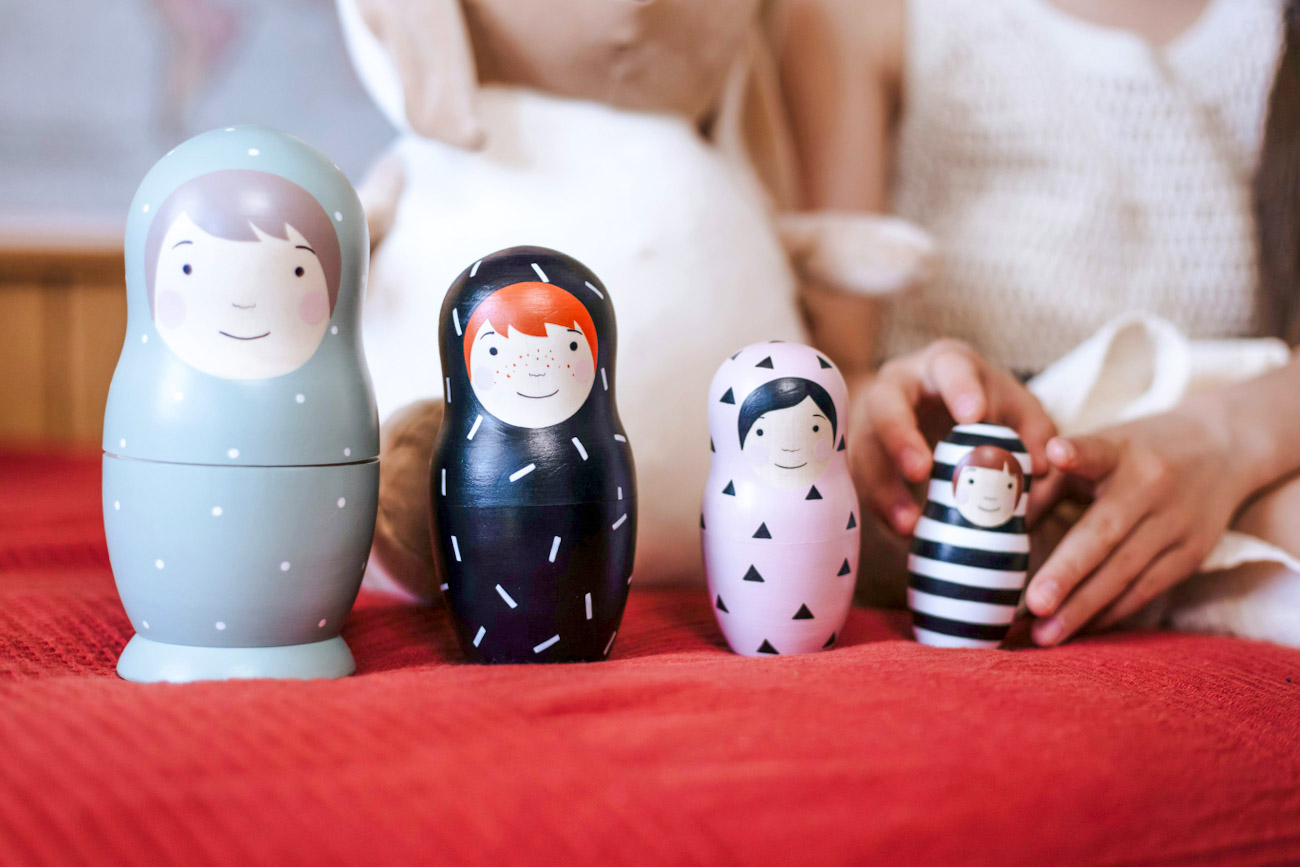
Some children become obsessed with stacking and nesting objects. It can be addictive! Early childhood educators will need to find new ways to extend this fine motor, cognitive and mathematical activity.
Commercial stacking and nesting toys are available for purchase, including colourful wooden rainbows, Matryoshka dolls, and baby stacking rings. However, there are endless household items that can be stacked or nested.
Look in your kitchen for sets of measuring cups, measuring spoons, and mixing bowls. Check in the recycling bin for containers of various sizes, shapes and materials. The home corner offers more opportunities where children can place bags inside each other, or small toys in clothes pockets.
EYLF Learning Outcomes
The process of stacking and nesting develops children's:
- fine motor skills
- hand-eye coordination
- spatial awareness
- understanding of cause-and-effect
- problem-solving skills
- understanding of mathematical concepts like size and shape.
Stacking and nesting play supports children to become strong in their physical learning and wellbeing (3.2). It develops their curiosity, confidence, commitment, enthusiasm and persistence (4.1). They gain learning and thinking skills such as problem-solving, inquiry, experimentation, hypothesising, researching and investigating (4.2).
Children can use diverse objects and materials to stack and nest, including unconventional objects. This teaches them to transfer and adapt what they have learned from one context to another (4.3) and connect with natural and processed materials (4.4).
Learning experiences
Stack different objects
Younger children can stack:
- plastic rings on a stand
- wooden blocks into towers
- pillows to create a soft mountain
- and different-shaped containers.
Older children can stack:
- cups to make a pyramid
- rocks in a garden
- cardboard boxes to build a cubby house
- and stackable chairs.
Experiment with balance in stacking
Stacking is scientific exploration! Educators can suggest experiments or challenges for children. While they play, talk to children about the concept of balance. Ask them to compare objects and guess what will happen.
Children can explore the concept of balance by:
- carefully placing different-sized objects on top of each other
- observing what happens when weights are unevenly stacked
- using a combination of light and heavy items
- stacking objects with both rounded and flat surfaces
- and seeing how high they can stack objects before they fall over.
Explore the concepts of inside and outside
Nesting involves placing small objects inside a larger object. This is a fantastic opportunity to teach children the words “inside” and “outside”. Find a large cardboard box and ask children to climb “inside” and “outside”. Also, use the words while transitioning between the classroom and outdoors.
Explore quantity and estimation
Educators can help children count the number of objects that are stacked or nested. Children who are familiar with numbers can try estimating. How many boxes do you think we can stack before the tower falls over?
